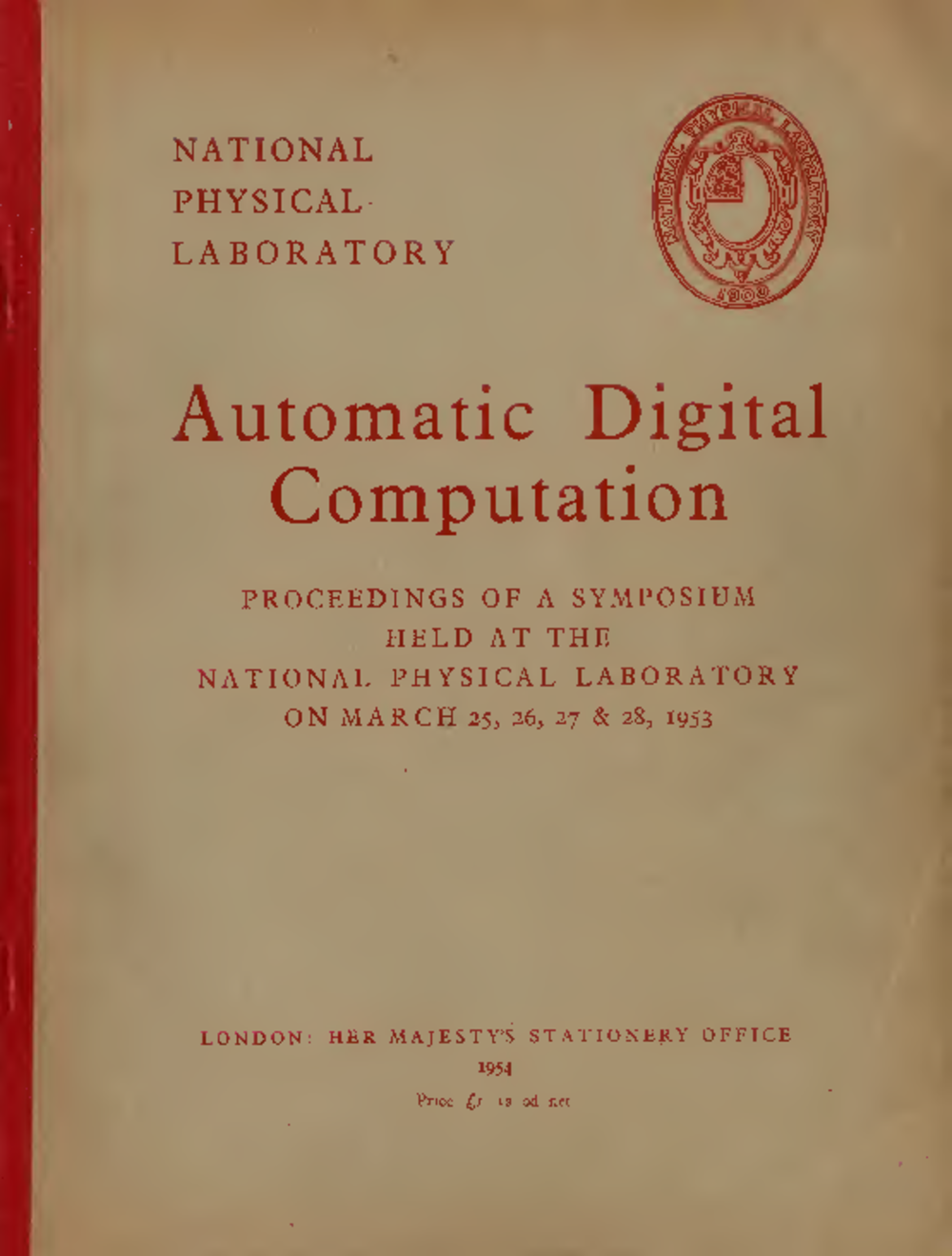
| Home > LEO Computers > LEOPEDIA > Articles, Reviews and Other Papers > Operating and Enginee ... ience Gained with LEO |
Operating and Engineering Experience Gained with LEO
|
Article by John Pinkerton (1954) in Automatic Digital Computation, Proceedings of a Symposium held at National Physical Laboratory, March 1953, pp. 21-30, published by HMSO. T.R. Thompson also delivered a paper at the conference on Special Requirements for Commercial or Administrative Applications and Douglas Hartree commended J. Lyons & Co. in his opening address for undertaking the "first high-speed automatically sequenced machine to be built primarily for commercial and clerical work".
Provenance: This volume was donated to the Centre for Computing History as part of a collection of Ferranti hardware and a series of documentation on early computing, by Trevor Griffiths, in June 2019 (CCH OE 687). Research comments: The Pinkerton article is on pages 20-34 of the Proceedings. Page 20 shows a photograph of LEO I (this image is included in CCH's development work to construct a virtual reality LEO I, photo ref LEO1p11).
Key points from the article include:
Refers to auxiliary equipment produced by Standard Telephones & Cables Ltd (STC), which went on to prove unreliable. The equipment was eventually abandoned in favour of a scheme developed internally by the LEO engineers. (LM)
|

|









